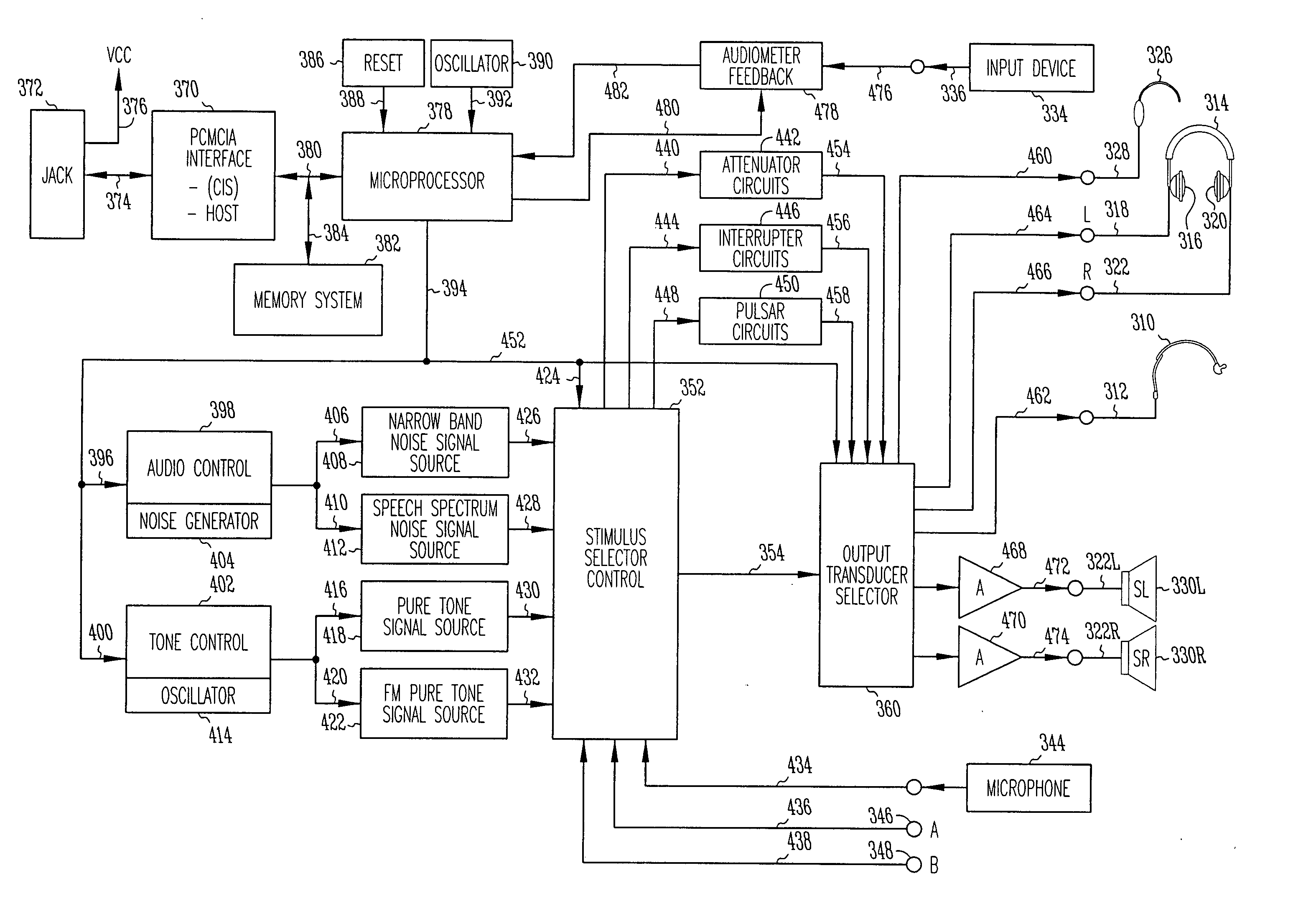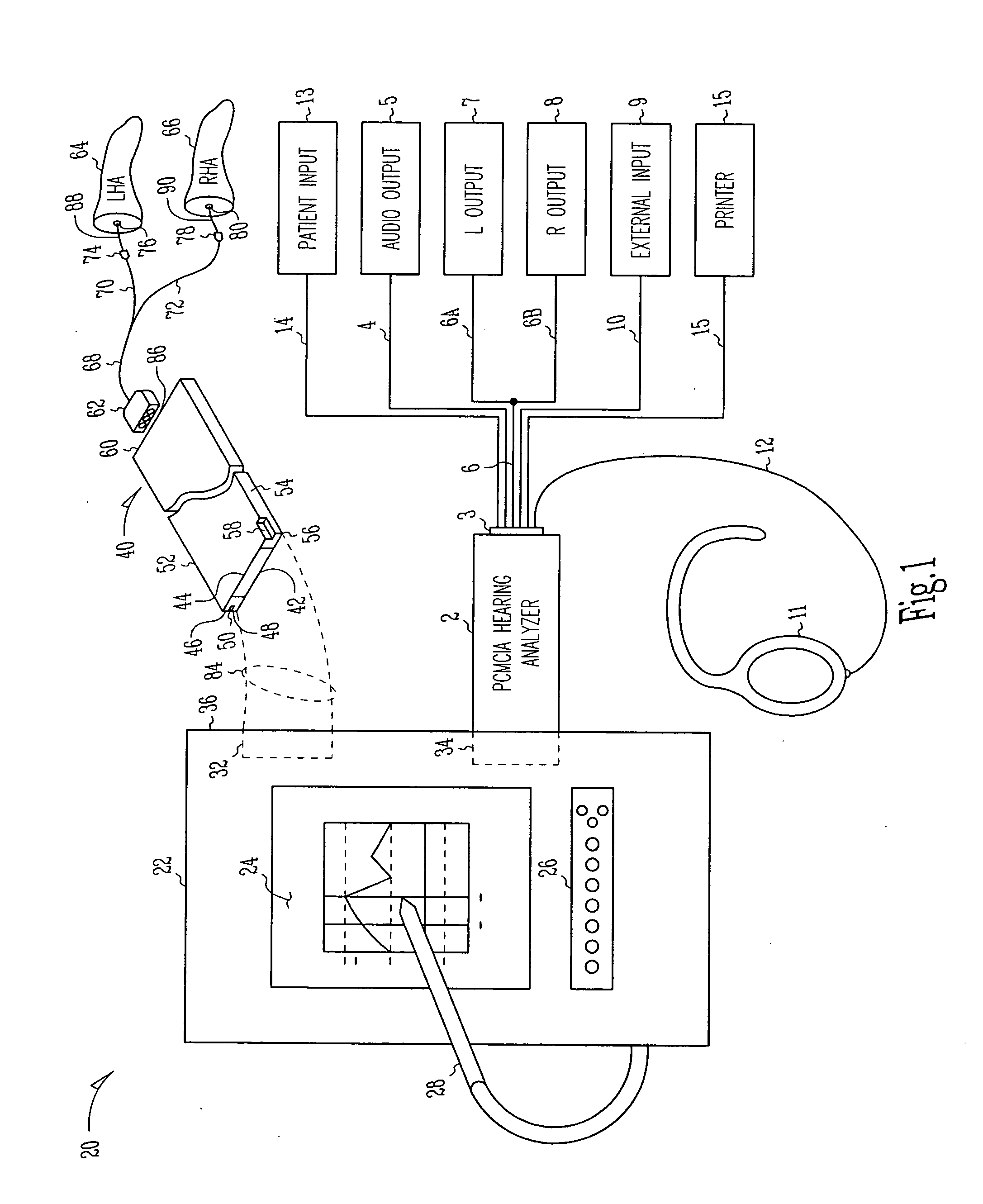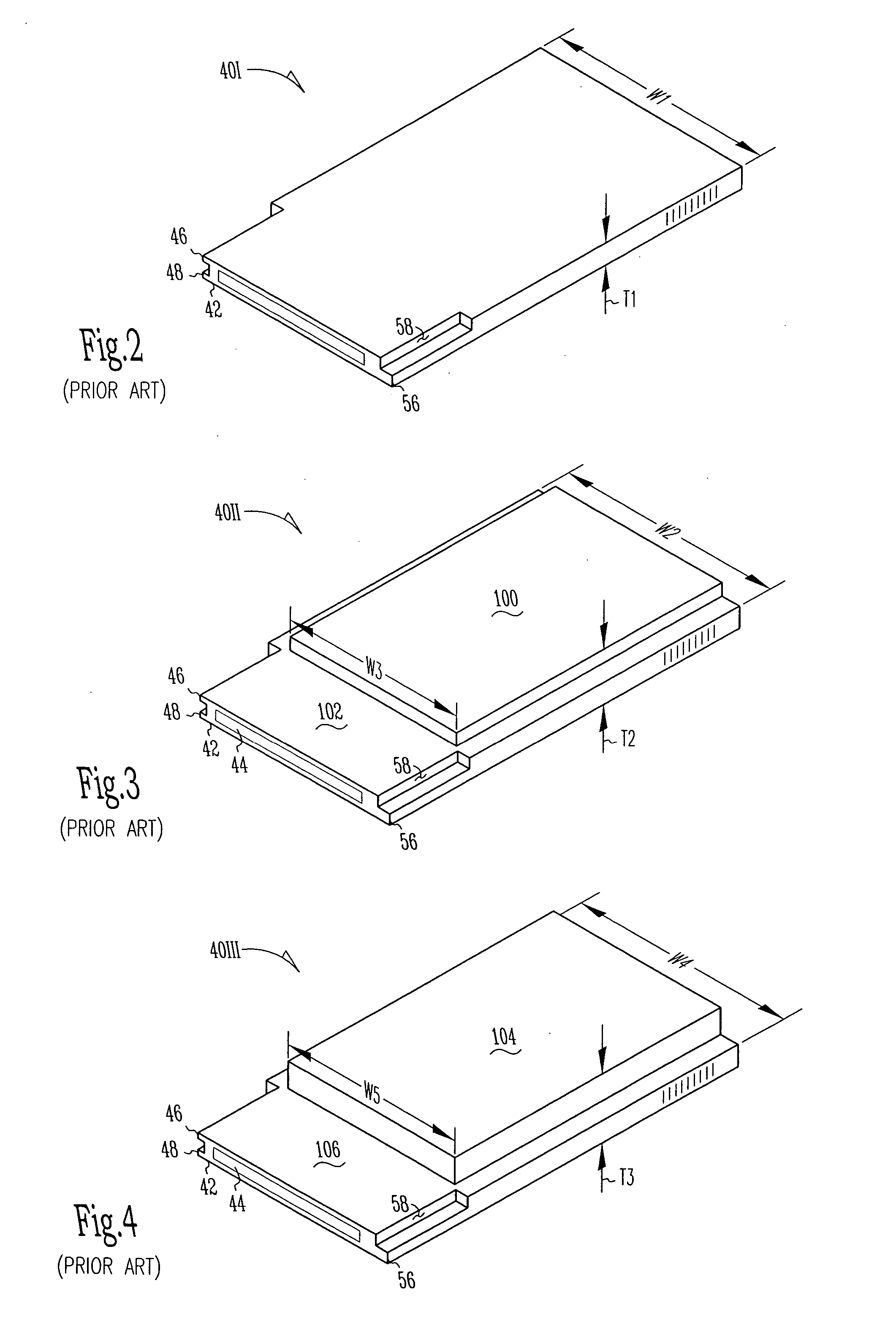Portable hearing-related analysis system
a technology of hearing analysis and portability, applied in the field of portability hearing analysis system, can solve the problems of increasing the cost of staying current, individual hearing loss is not uniform, and prior art audiometers being primarily useful, so as to achieve the effect of ensuring current status and ensuring accuracy
- Summary
- Abstract
- Description
- Claims
- Application Information
AI Technical Summary
Benefits of technology
Problems solved by technology
Method used
Image
Examples
Embodiment Construction
[0048] It is generally known that a person's hearing loss is not normally uniform over the entire frequency spectrum of hearing. For example, in typical noise-induced hearing loss, that the hearing loss is greater at higher frequencies than at lower frequencies. The degree of hearing loss at various frequencies varies with individuals. The measurement of an individual's hearing ability can be illustrated by an audiogram. An audiologist, or other hearing health professionals, will measure an individual's perceptive ability for differing sound frequencies and differing sound amplitudes. A plot of the resulting information in an amplitude / frequency diagram will graphically represent the individual's hearing ability, and will thereby represent the individual's hearing loss as compared to an established range of normal hearing for individuals. In this regard, the audiogram represents graphically the particular auditory characteristics of the individual. Other types of measurements relati...
PUM
 Login to View More
Login to View More Abstract
Description
Claims
Application Information
 Login to View More
Login to View More - R&D
- Intellectual Property
- Life Sciences
- Materials
- Tech Scout
- Unparalleled Data Quality
- Higher Quality Content
- 60% Fewer Hallucinations
Browse by: Latest US Patents, China's latest patents, Technical Efficacy Thesaurus, Application Domain, Technology Topic, Popular Technical Reports.
© 2025 PatSnap. All rights reserved.Legal|Privacy policy|Modern Slavery Act Transparency Statement|Sitemap|About US| Contact US: help@patsnap.com



